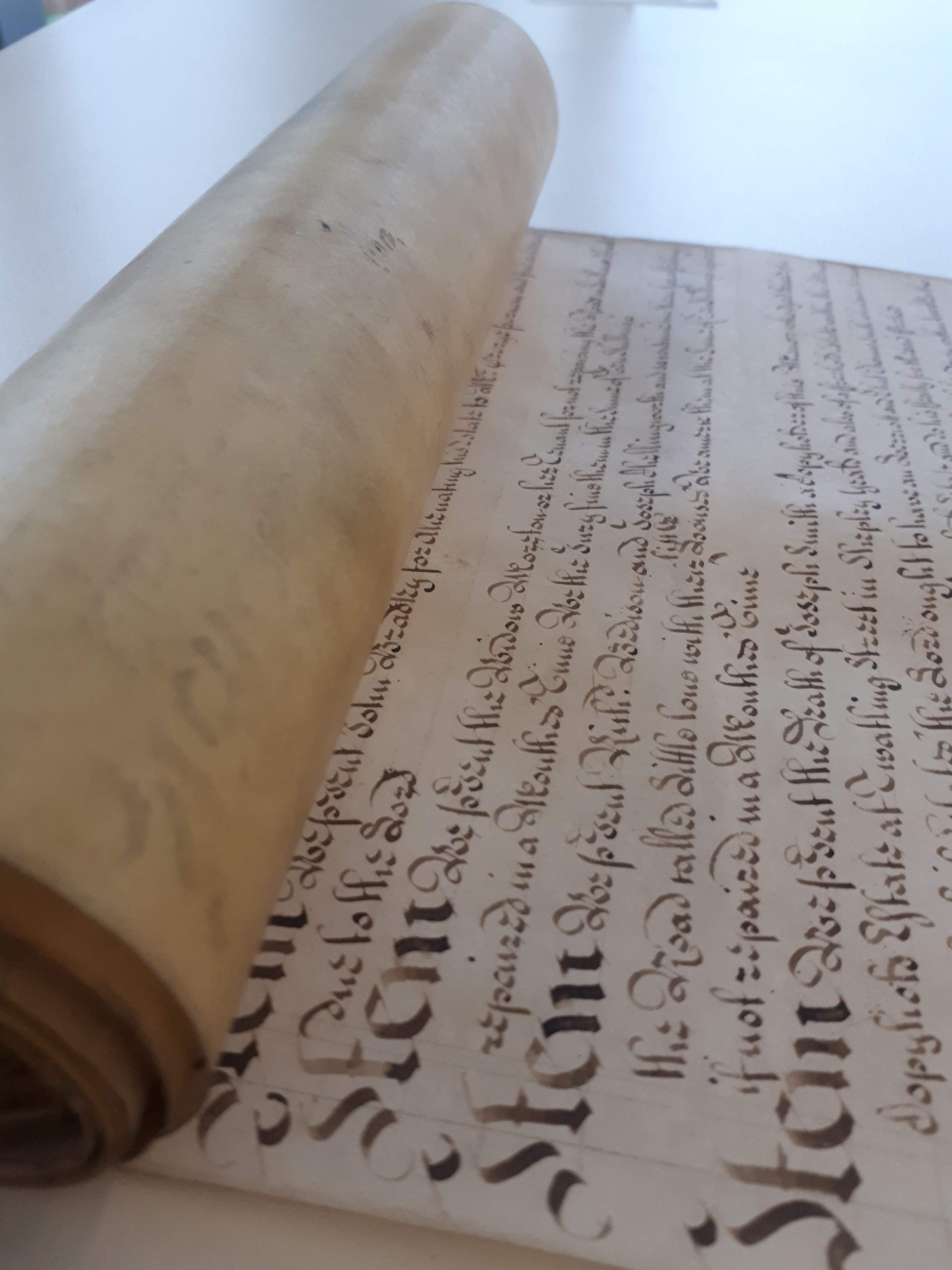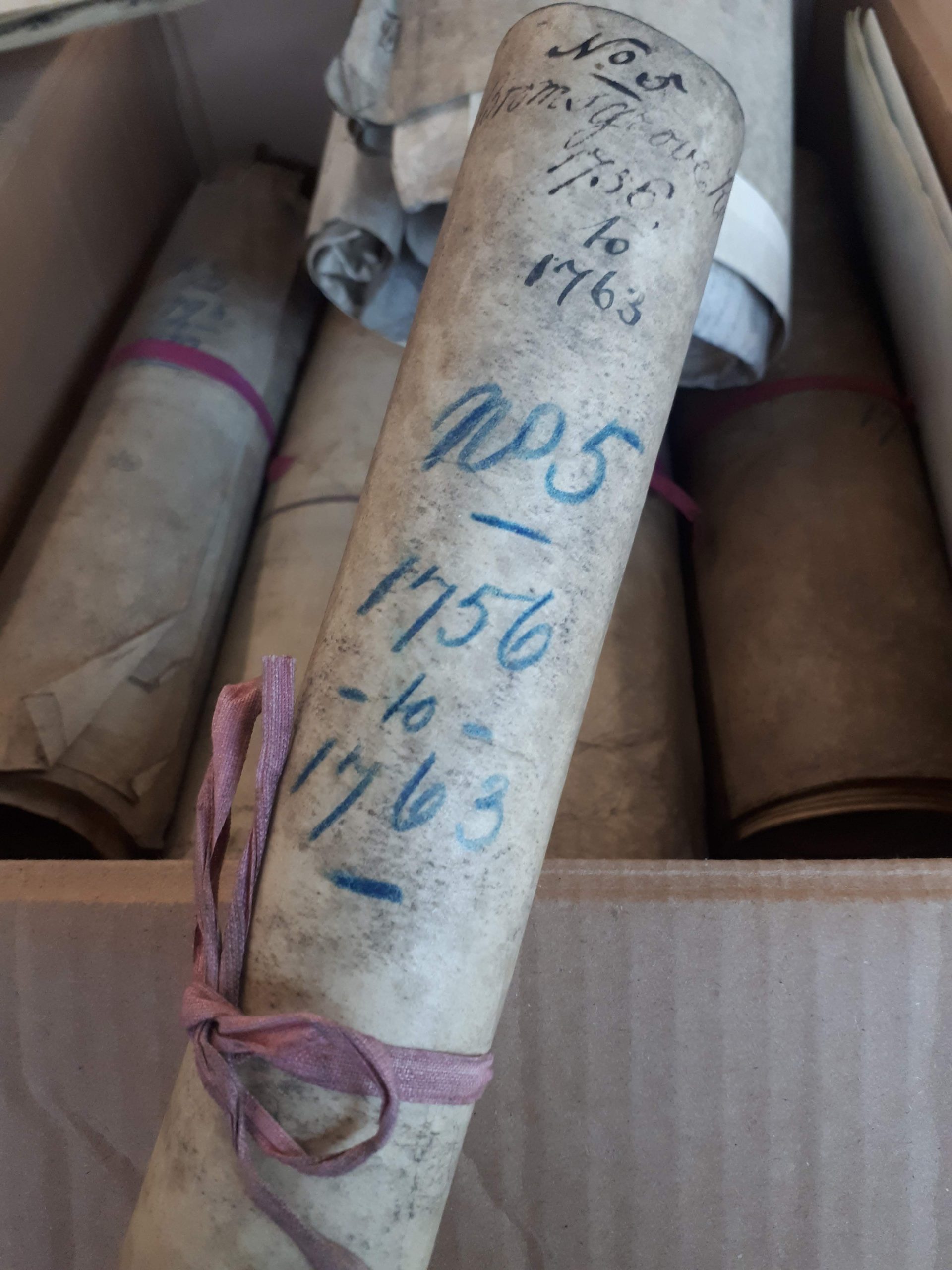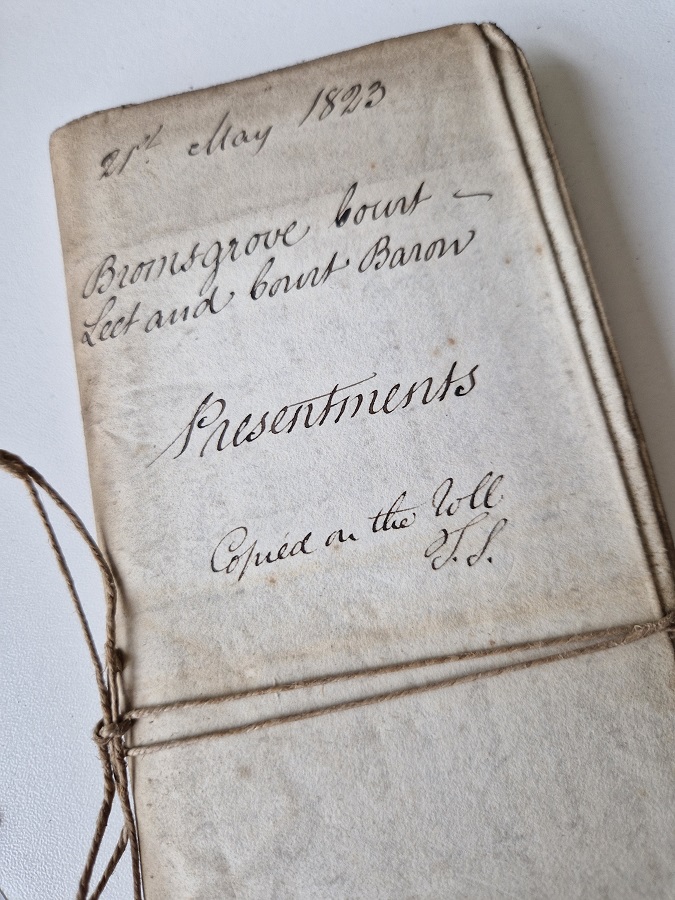The Bromsgrove Court Leet: A court and project 400+ years in the making!
- 22nd March 2024
In recent years, documents relating to the business of the Bromsgrove Court Leet have been moved from dusty lofts and boxes under desks to the archive department at The Hive for permanent preservation.
The Court Leet is a manorial court, which began when the manorial system was introduced by William the Conqueror in which the Manor of Bromsgrove was first recorded for Domesday in 1086. The manorial system decreed that all land was owned by the king who granted the manors to his supporters or, perhaps, as in the case of Bromsgrove, a manor was retained for his own use. The government of the manor was in the hands of the Court Leet and one privilege of being ‘Royal’ was that the appointment of the Lord’s steward – his chief agent – was subject to the approval of the Court. The court usually met at least twice a year, sometimes more and had the right to deal with minor criminal offences and hold view of Frankpledge. This was a meeting of the freeholders in the manor at which the Tythingmen reported on all the happenings within their ‘yield’ – so named because in addition to other duties they were also responsible for the collection of ‘lewnes’ or local taxes.
Other officers of the court were the ‘Affeerors’, whose job it was to assess the proper amount of any fine which the court may have decided to impose. Other important officers were the equivalent of today’s trading standards officers. Although the powers of the Court have been assumed by other authorities, its continued existence was specifically authorised by the Administration of Justice Act 1977 and it continues as a piece of living history. To find out more about the history of the Bromsgrove Court Leet, visit their website.

Close up of a document in the collection
In 2008 the retiring Custodian of the Records, Mr Martin Gorman, a solicitor in Bromsgrove, deposited five boxes which included 17 Court Rolls dating from 1726 to 1891, presentments from 1737 to 1901, various legal documents from 1573 to 1910 and the agendas and papers from Autumn and Spring Court meetings from 1892 to 1912. Court rolls are minutes of the court, usually in a distinct format listing tenants, followed by the names of jury, presentments, general matters, death of tenants and surrenders of land. Presentments are a statement by the jury or officer of the manor court of matters to be discussed in court.
Back in June 1949 Rev F G Shepherd moved over 80 Court Rolls dating from 1335 to 1782 from St John’s Church to Worcester Archives. Many of these ancient documents are in excellent condition, mostly written in English, with only the first section of the earliest roll in Latin. The collection was added to in December 1953 by J G Horton who deposited lists of fines and copies of Court Rolls 1629 to 1886, rent rolls from 1700 and the Court roll from 1651. On the 15th January 1986, 84 press cuttings from Bromsgrove Messenger covering 1880 to 1976 were deposited.

Court Roll Five 1756-1763
At the Spring Court meeting in 2023, the current Custodian of the Records Ms Joanne Slade proposed to the members of the Court that the deposited boxes be professionally catalogued so that a complete record of what is stored can be made available. This would include Court Rolls, documents to back up rolls, legal papers i.e. account rolls, copy holds & property list, rents, Court papers – agendas, presentments, menus etc.
The cataloguing project, once completed, will allow access to the contents of the boxes by those interested in finding out more about the business of the Court Leet and the residents in Bromsgrove. All items in the boxes will be available for individual research projects, which may have a wider interest outside of Court members.

Presentments 1823
Jo Slade is the Custodian of the Records at Bromsgrove Court Leet, and is leading the project. She said “It is so important that we ensure that the historical records of the Court Leet are professionally catalogued so that the information contained within the documents can be made available to all. The Court Leet is funding the project as all members recognise the value and significance of the collection and are keen to both preserve the documents and ensure they are used. The team of volunteers have really enjoyed delving into the past in this way and are often distracted by the content of the documents! We are extremely grateful to the team at The Hive for their support throughout the project.”
Adrian Gregson, County Archivist also said “This has been a great opportunity to make the Court Leet records available to a wider public. It is adding greater depth and interest to the history of Bromsgrove and the project has been a very good demonstration of how we can work with partners and volunteers to widen access to historical resources.”
A group of four volunteers are working their way through the boxes, creating a record of what is included in the papers and numbering each item. A professional Archivist at The Hive is overseeing the work and uploading the collected data to the digital catalogue. Once the boxes are catalogued, the catalogue will be available online via The Hive, enabling people to discover historical information from within the deposits. Anyone interested will be able to access the material in the Searchroom at The Hive.

Document about a Henry Robinson
What happens after the boxes are Catalogued?
The next stage of the project will be to identify the most important items for scanning, digitalisation, and transcription. This will be decided once all boxes are catalogued and a full list of the contents is made available.
Find out more about the Bromsgrove Court Leet on their website or via Facebook.
Brilliant. Can you do Cotheridge next. Thank You